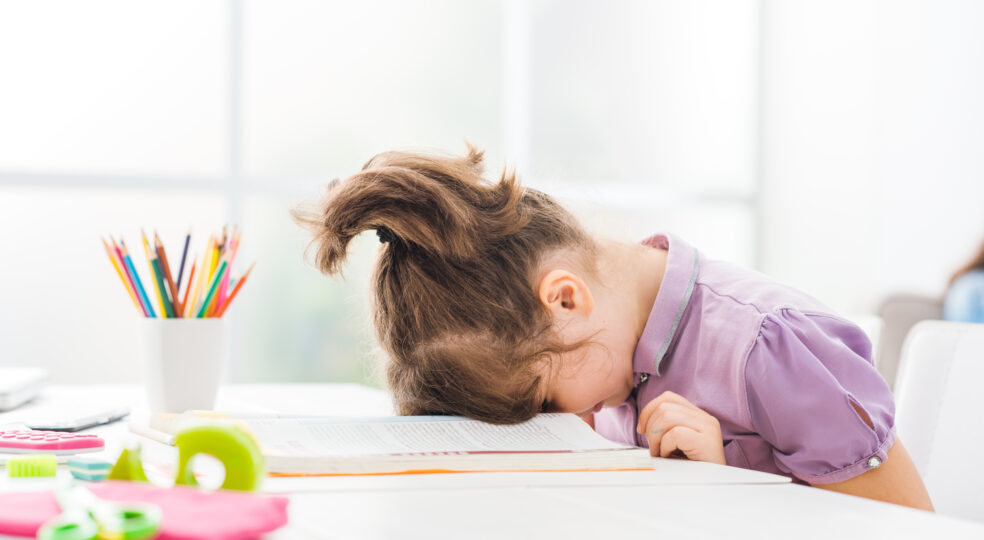
As a parent, you are probably familiar with the following situation: Your child starts to whine insistently because he or she wants something. The classic is sweets at the supermarket checkout. If you deny your child his wish, a real outburst of rage follows with screaming, crying or even throwing him on the floor.
Dealing with frustration is something that children have to learn in the course of their development. However, you can support your child in this process.
As the name suggests, frustration tolerance is the ability to endure frustrating situations.
Below are a few examples:
Dealing with Disappointments and unfulfilled expectations is a developmental process. The older a child gets, the higher his or her frustration tolerance becomes. Consequently, a baby can withstand much less frustration than an elementary school child.
In the course of their lives, children are confronted with various feelings - including negative ones. The regulation of these feelings plays a decisive role in the acquisition of frustration tolerance. Regulation in this context does not mean in any way emotions to suppress frustration. On the contrary, the child learns that frustration is part of every person's life at times.
In addition, the topic of "frustration tolerance children" is individual. Some children acquire this ability earlier, others later. As a parent, you should lovingly support your child in this developmental process in an age-appropriate manner.

Frustration tolerance is essential for harmonious interaction. It is therefore important that your child has learned to tolerate a minimum amount of frustration by the time he or she starts school. Otherwise, problems in the social sphere can quickly arise. The following five steps can help you increase your child's frustration tolerance. Promote child.
The first step will be to identify the Patience of your child. He or she must learn that goals are not achieved on their own, but that you have to do something to achieve them: For example, before food is on the table, mom and dad have to shop and cook first. Before they can play, they have to tidy up their room.
In this way, your child learns that adults also have obligations that cannot be postponed. To encourage your child's patience, you can also put him off with child-friendly alternatives: "I still have to mop the bathroom, but afterwards I'll be happy to play with you. Go ahead and pick a game for us."
Signal to your child that you understand his frustration and that the negative feelings have a right to exist. Now it's time to find ways to deal constructively with the overflowing emotions. Instead of yelling and raging, there are other ways to channel the anger:
Once the acute tantrum is over, you should talk to your child about the situation. Ask specific questions about this:
Depending on their age, analyzing the situation can be effective in helping your child next time to more serene remains.
Parents of children with low frustration tolerance often make the mistake of protecting their child from potentially frustrating situations. However, by doing so, you deprive your child of the important opportunity to learn how to deal with frustration.
Let your child try different things, even if failure is likely. Learning that not everything will work out right away is an important developmental step. Also, support your child in solving tasks and problems on his or her own. If you always give the solutions, the child will sink. Motivation and self-esteem.
Children should be given responsibility appropriate to their age. The positive effects on the development are in the following scientific articles best described:
Therefore, let your child take on smaller tasks such as setting the table or folding laundry. Not everything will be perfect right away. But that is not the goal. Rather, the goal is to let the child grow through his or her experiences.
In everyday life, there will always be situations that test your child's frustration tolerance. You can support your child with the following eight tips.
Do you get angry quickly when a situation doesn't go your way? Then your child may have copied his behavior from you. Therefore, keep an eye on how you deal with frustration.
Nobody can only win all the time: This starts with board games and continues throughout life. So you're not doing your child any favors if you always let him win. At the latest when he plays with other children, the frustration will be even greater.
For some things, there is simply no room for negotiation. You should communicate this clearly to your child. Do not get involved in discussions, but state clearly what you want from your child.
Children with a low frustration tolerance can be recognized by the fact that they constantly interrupt others. Good ways to train frustration tolerance are 15-minute conferences. Each of you has 5 minutes to speak without the other person interrupting. The last 5 minutes are dedicated to finding solutions.
Most parents strive to keep their children busy all the time. But boredom can make children creative and increase their frustration tolerance. If the parents do not immediately offer a solution, the children will look for something to do themselves.
You don't have to jump immediately when your child wants something. Prompt wish fulfillment may save you a tantrum at the time. In the long run, however, the situation will get worse. If a wish can't be fulfilled right away, your child will be upset. child does not understand this and accordingly angry react.
Do not leave your child alone with his frustration. Punishment or ignorance are not suitable means of education. Instead, let your child know that you understand his or her frustration:
"I know you're mad because I didn't buy you that toy. But you get your allowance for special wishes. Mom has to save up before she can make wishes, too."
There are numerous specialist books that deal in detail with the subject of "frustration tolerance in children". Reading up on the subject and thus sharpening your understanding can give you more confidence in numerous everyday situations.
In this context, we would also like to introduce you to our free e-book "The 10 best tips for fun and success in learning". to the heart. In our compact guide, you'll learn how to turn learning frustration into learning desire again and how you can successfully accompany your child through his or her school years.

Frustration arises when you feel powerless in a situation. This applies equally to children and adults. A low frustration tolerance can be related to personal mentality, but sometimes other factors also play a role. It can therefore make a lot of sense to use coaching to investigate the causes.
Within the framework of a professional Coachings various questions are discussed with the child: Where does the frustration come from? In which situations do these negative feelings overtake you most often? The goal is to determine trigger points, which in turn are linked to negative beliefs and inner blockages are connected. Only when these are known can targeted action be taken.
Furthermore, the child is encouraged to listen deeply within himself: Where exactly in the body do you feel the frustration? The latter can express itself in different ways. Many children feel the frustration in their stomach, others grind their teeth. By using relaxation methods, the child can learn to calm himself down in the respective situations.
School and learning are common trigger points when it comes to the topic of frustration tolerance kids. After all, the Potential of failures and disappointments is particularly high here. To support your child, it makes sense for you as a parent to acquire certain learning coaching skills.
As part of our training for the Learning Coach you will learn how you can specifically promote your child's ability to concentrate and intrinsic motivation.
Resilience is another term for psychological resilience. The latter is crucial for dealing with disappointment and frustration. The following three exercises are ideally suited for children:
Breathing exercises are an effective way to calm yourself in stressful situations and also sharpen your ability to concentrate. Studies prove that this also applies to children.
The 4×4 breathing exercise has proved particularly effective. This involves breathing deeply into the abdomen for four seconds, then holding the breath for four seconds. Then exhale for four seconds and hold your breath again for four seconds. The exercise can be repeated as often as desired.
Encourage your child to give himself compliments. To do this, they write down on a piece of paper what they like about themselves or what they have done well. The notes are folded up and put in a box. Whenever the child is angry or sad, he or she may take a compliment slip. This reminds the child, "I'm great the way I am."
Your child draws a picture: the sun is shining on the right and it's raining on the left. Your child should now write all his sorrow on the rain side. All happy thoughts go on the sunny side. Both sides of the page are connected by a rainbow. When your child is sad, he or she can imagine bringing the positive things over the rainbow to him or her.
Learning to tolerate frustration is an important milestone in child development. However, each child has his or her own pace in this process. By listening to your child's feelings mindful If you accompany your child without giving in to his tantrums, his frustration tolerance will gradually increase in line with his age. In addition, you can support it with the exercises and measures presented.

